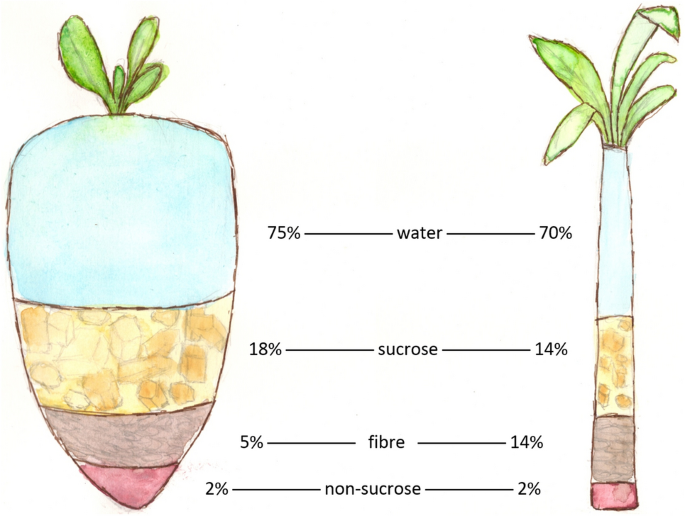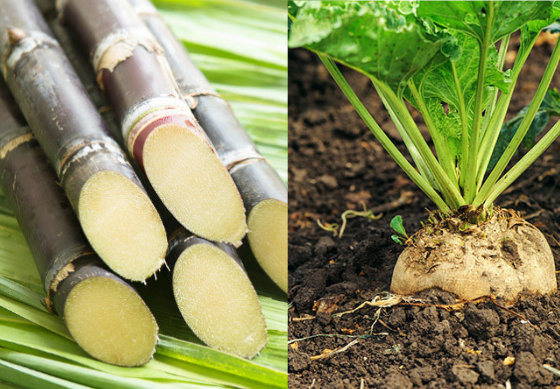In discussions of beet sugar vs cane sugar, the type of the sugar plays a important role in its properties.
In discussions of beet sugar vs cane sugar, the type of the sugar plays a important role in its properties.
Blog Article
Discover the Uses and Advantages of Beet Sugar Vs Cane Sugar in Your Daily Diet Regimen
Discovering the unique qualities of beet and cane sugar reveals greater than just their sweetening abilities; it highlights their one-of-a-kind influence on health and cookeries. Beet sugar, understood for its subtle flavor, is frequently favored in fragile treats, whereas cane sugar, with its hint of molasses, includes richness to durable recipes. Each type holds its very own dietary profile and glycemic implications, inviting a deeper understanding of their roles in a well balanced diet and sustainable intake practices.
Beginning and Manufacturing Processes of Beet and Cane Sugar

The unique climates and soil kinds required for growing sugar beetroots and sugarcane add to differences in their cultivation methods and geographical circulation, affecting the economics and sustainability of their production. beet sugar vs cane sugar.
Nutritional Comparison In Between Beet Sugar and Cane Sugar
In spite of stemming from various plants, beet sugar and cane sugar are nutritionally extremely comparable, both primarily including sucrose. Each gives regarding 4 calories per gram, translating to approximately 16 calories per teaspoon. Structurally, both sugars are made up of roughly 99.95% sucrose, with minimal amounts of other materials like dampness and trace element, which do not dramatically modify their dietary accounts.

Inevitably, when selecting in between beet sugar and cane sugar based upon nutritional web content alone, both offer identical advantages and drawbacks as they are essentially kinds of the exact same particle-- sucrose, giving quick energy without various other nutrients.
Influence on Wellness: Glycemic Index and Caloric Content
Checking out even more right into the impacts of beet sugar and cane sugar on wellness, it is essential to consider their glycemic index and caloric material. The glycemic index (GI) of Go Here both beet and cane sugar is around 65, categorizing them as high-GI foods, which can cause fast spikes in blood glucose levels.
Each kind of sugar includes around 4 calories per gram, making their calorie web content equivalent. For those checking calorie intake, specifically when managing weight or metabolic wellness problems, recognizing this equivalence is crucial (beet sugar vs cane sugar). Too much consumption of any type of high-calorie, high-GI food can add to wellness concerns such as obesity, heart disease, and insulin resistance.
Environmental and Economic Considerations of Sugar Production
Beyond wellness effects, the manufacturing of beet and cane sugar additionally raises substantial ecological and economic concerns. Sugar beet growing often tends to need cooler climates and has a reduced geographical footprint contrasted to sugar cane, which thrives in exotic regions. Nevertheless, both crops are extensive in terms of water use and land occupation, potentially causing logging and water shortage. Financially, the global sugar market is extremely unstable, influenced by modifications in worldwide trade plans and subsidies. Several nations incentivize sugar production via financial backing, skewing market costs and influencing small-scale farmers negatively.
In addition, using pesticides and plant foods in both beet and cane see here now sugar cultivation can cause soil degradation and air pollution, more affecting biodiversity and regional water bodies (beet sugar vs cane sugar). The selection between growing sugar beet or cane typically pivots on local environmental conditions and economic elements, making the sustainability of sugar production a complicated concern
Culinary Applications and Taste Distinctions
While the environmental and economic aspects of sugar manufacturing are undoubtedly significant, the choice in between beet and cane sugar additionally affects cooking applications and taste profiles. Beet sugar, originated from the sugar beet plant, is understood for its incredibly neutral preference. This makes it a versatile active ingredient in baking, where it does not change the flavor of various other components. It liquifies rapidly and is ideal for usage in cakes, cookies, directory and breads.
Walking stick sugar, extracted from sugarcane, usually keeps molasses traces, which present a distinctive richness and depth. The small variant in wetness web content between beet and cane sugar can impact the texture and uniformity of recipes, making cane sugar a recommended selection for specific dishes that benefit from its one-of-a-kind properties.

Conclusion
Finally, both beet and cane sugar have unique beginnings and production procedures, offering comparable nutritional profiles with slight distinctions in salt material and taste. While their effect on wellness, specifically concerning glycemic index and calories, is comparable, the selection between them commonly comes down to environmental, economic elements, and certain culinary requirements. Recognizing these elements can lead customers in making informed choices that line up with their health goals and taste choices.
Report this page